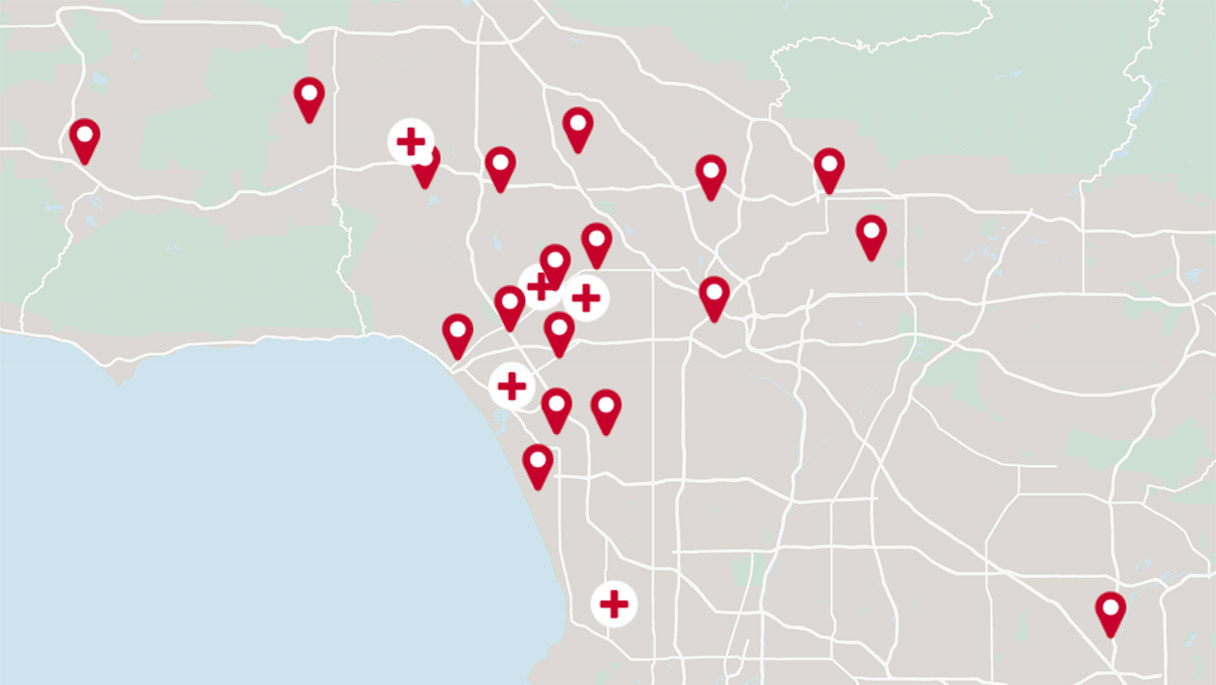Myelodysplastic Syndrome
Overview
Myelodysplastic syndromes affect blood cell production and behavior. Blood carries oxygen, chemicals and hormones to the cells in the body and helps remove toxins and waste. Bone marrow (the spongy middle part of the large bones) produces the three main types of blood cells.
- Red blood cells carry oxygen to the tissues (muscles, bones, nerves and organs). Low red blood counts or malfunctioning red blood cells can cause anemia. Symptoms are paleness, feeling tired, fast-beating or pounding heart, dizziness, shortness of breath or headaches.
- White blood cells fight infection. Symptoms of infection caused by low white blood counts may include temperature rising to 38.0 C or 100.4 F, coughing, stiff neck, pain or burning with urination, sore throat, mouth or lip sores and sores that do not heal.
- Platelets help to prevent bleeding. Signs of inadequate platelets include bleeding or bruising too easily. Patients may experience bleeding of the gums when brushing their teeth, blood in the urine or stool, severe headache or visual changes or a stiff neck.
The five categories of MDS are:
- Refractory anemia
- Refractory anemia with ringed sideroblasts
- Refractory anemia with excess blasts
- Refractory anemia in transformation to acute leukemia
- Chronic myelomonocytic leukemia
The disease categories on the lower end of this list are more serious and have a worse prognosis than those at the top. Refractory anemia and refractory anemia with ringed sideroblasts primarily affect the red blood cells and are the most common forms of MDS. Refractory anemia with excess blasts is present when immature white blood cells are found in the bone marrow in abnormally large numbers (five to 20 percent bone marrow blasts, compared to normal blasts of less than one percent). Refractory anemia with excess blasts in transformation occurs when blasts become markedly increased (more than 20 percent) and may indicate that MDS will change to an acute form of leukemia.
Symptoms
When symptoms of Myelodysplastic Syndrome appear, they are usually subtle. MDS may remain stable for several years, or it may get worse quickly and progress to acute myeloid leukemia.
The most common symptoms are:
- Signs of anemia, such as weakness, tiredness, headaches, heart palpitations and dizziness
- Low platelet counts cause easy and profuse bleeding, as well as unexplained bruising
- Women may experience heavy menstrual periods
- Susceptibility to infection due to low number of white blood cells
Causes and Risk Factors
MDS may begin without any apparent cause.
Possible risk factors include:
- Exposure to certain chemicals, such as pesticides
- Exposure to chemotherapy or non-chemotherapy drugs and radiation
- Age may also be a factor since MDS is most commonly diagnosed in people 60 and older
Diagnosis
MDS is difficult to diagnose because of the absence of symptoms in the early stage of the disease. Often it is accidentally discovered during a routine physical exam or blood test. Routine screening tests do not exist for MDS, but if the disease is suspected, the doctor may order these tests:
- Complete blood count. A small amount of blood is drawn from the arm, and the lab measures red blood cells, white blood cells and platelets in the sample.
- Bone marrow biopsy
- An examination of the chromosomes that carry genetic material
Treatment
MDS is a progressive disease. As bone marrow becomes more affected, blood cells become more abnormal. Since no current therapies are effective in preventing MDS from worsening, treatment usually focuses on relieving the symptoms. Doctors will discuss with the patient the various options available, including:
- Antibiotics
- Red blood cell or platelet transfusions
- Chemotherapy
- Biologic therapy
- Differentiating agents (drugs)
- Bone marrow transplant
- Leukemia treatment
MDS may change into acute myelogenous leukemia (AML). AML causes large numbers of immature white blood cells to be produced by the bone marrow. When this occurs, the patient is treated for AML rather than MDS. Patients with refractory anemia with excess blasts and chronic myelomonocytic leukemia have a higher risk of progression.
Get the care you need from world-class medical providers working with advanced technology.
Cedars-Sinai has a range of comprehensive treatment options.


